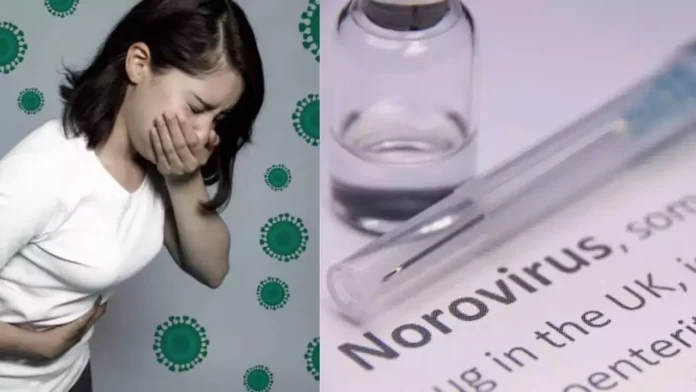Norovirus is a highly contagious virus that spreads rapidly, causing outbreaks every year. Known as the “stomach bug,” it transmits through contaminated surfaces, airborne particles, and direct contact. According to the Centers for Disease Control and Prevention (CDC), at least 91 outbreaks have already been reported since December’s first week in the United States. This virus is particularly hard to kill because it can survive on surfaces for weeks to months, making thorough cleaning and prevention critical.
What Is Norovirus And Why Is It So Persistent?
Norovirus is a group of viruses that cause gastroenteritis, characterized by severe vomiting, diarrhea, stomach cramps, and dehydration. Its ability to persist in various environments makes it challenging to eradicate.
- Resilience: Norovirus can survive extreme temperatures and resist common disinfectants.
- High Transmission Rate: A single infected person can shed billions of virus particles, but only a few particles are needed to infect another person.
- Survival On Surfaces: It can linger on surfaces like countertops, doorknobs, and utensils for weeks, making reinfection possible even after cleaning.
The History Of Norovirus Outbreaks
Norovirus outbreaks have been documented globally for decades. The virus is often associated with densely populated areas like cruise ships, schools, and hospitals.
- In 1968, Norwalk, Ohio, recorded one of the first significant outbreaks, giving the virus its original name, “Norwalk Virus.”
- In 2020, norovirus outbreaks spiked globally due to increased sanitization challenges during the COVID-19 pandemic.
How Does Norovirus Spread So Quickly?
Norovirus spreads primarily through:
- Contaminated Food And Water: Consuming food or water handled by an infected person or exposed to the virus can lead to outbreaks.
- Direct Contact: Touching an infected person or surfaces contaminated with the virus is a common way to contract it.
- Airborne Particles: When an infected person vomits, microscopic particles of the virus can become airborne and infect others nearby.
Why Is Norovirus Hard To Kill?
The structure of norovirus gives it an advantage over traditional cleaning methods:
- Resistant To Disinfectants: Many household cleaners are ineffective against the virus. Specialized disinfectants containing chlorine or hydrogen peroxide are needed.
- Adaptability: Norovirus can thrive in a wide range of conditions, including cold and heat, making it difficult to eliminate.
- Lack Of Immunity: Unlike some viruses, norovirus does not provide long-term immunity after infection, meaning individuals can be infected multiple times.
Steps To Prevent Norovirus Outbreaks
Preventing norovirus requires proactive measures, especially during outbreak seasons:
- Practice Proper Hygiene: Wash hands thoroughly with soap and water, especially after using the bathroom and before eating.
- Sanitize Surfaces: Use EPA-approved disinfectants effective against norovirus to clean frequently touched surfaces.
- Handle Food Safely: Ensure proper cooking temperatures and avoid preparing food if feeling unwell.
- Isolate Infected Individuals: Those infected should avoid public places, schools, and workplaces until at least 48 hours after symptoms subside.
The CDC’s Role In Tackling Norovirus
The CDC plays a critical role in monitoring and controlling norovirus outbreaks:
- Surveillance: Tracking outbreak patterns and providing timely updates to the public.
- Guidelines: Issuing recommendations for sanitation and food safety to prevent the virus’s spread.
- Research: Developing vaccines and treatments to combat norovirus more effectively.
Global Impact Of Norovirus
Norovirus causes approximately 685 million cases annually worldwide, including 200 million cases affecting children under five. The economic burden is significant due to healthcare costs and productivity losses.
- In the United States, norovirus is responsible for an estimated 21 million illnesses annually, with 70,000 hospitalizations and 800 deaths.
- Countries with limited access to healthcare and sanitation face higher mortality rates due to severe dehydration caused by the virus.
Emerging Research And Vaccination Efforts
While there is currently no vaccine for norovirus, researchers are working on developing one.
- Experimental vaccines have shown promise in reducing the severity of symptoms.
- Advances in understanding the virus’s structure and transmission could lead to more effective prevention strategies in the future.
Why Norovirus Remains A Public Health Challenge?
Despite advances in healthcare and sanitation, norovirus continues to pose a challenge due to its unique properties and high adaptability. Its resilience on surfaces, coupled with its ability to spread quickly, makes it one of the most persistent public health threats globally.
As norovirus continues to cause widespread illness, public awareness and preventive measures are crucial to reducing its impact. By understanding the virus’s characteristics and adopting effective hygiene practices, individuals and communities can work together to curb its spread and protect public health.



